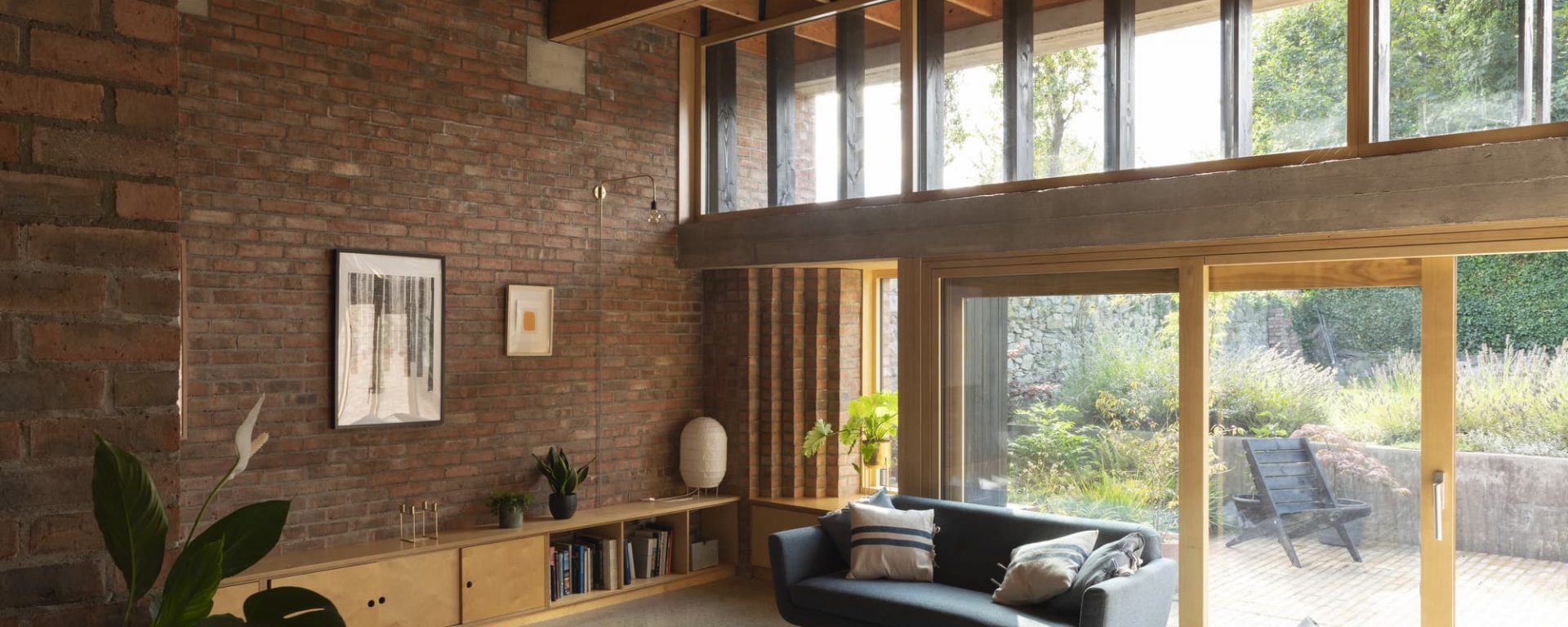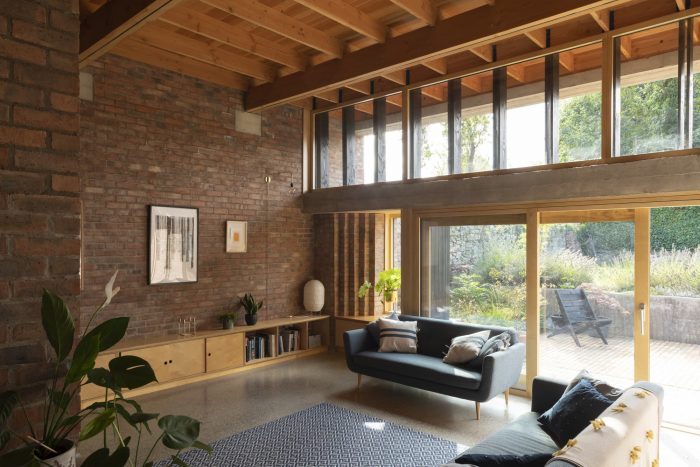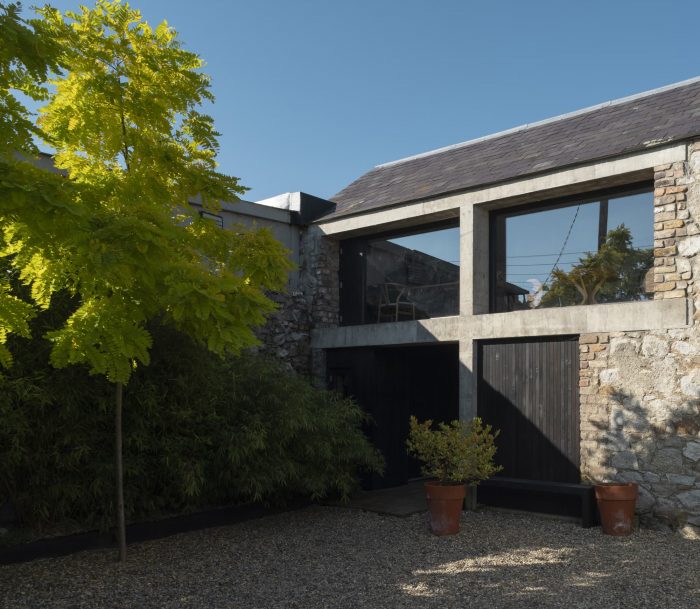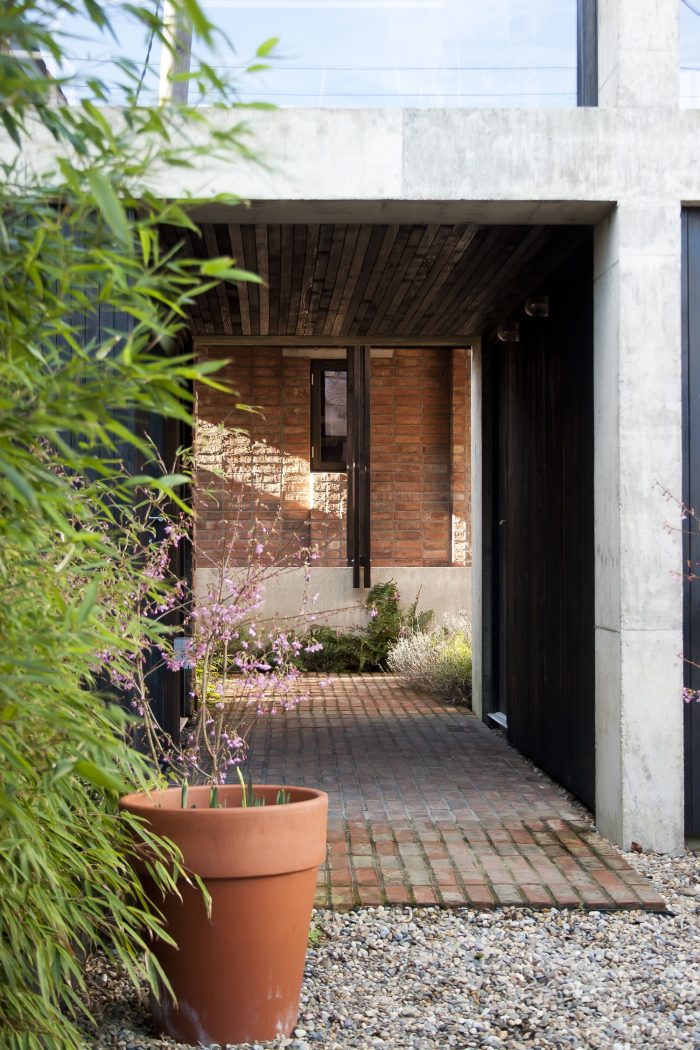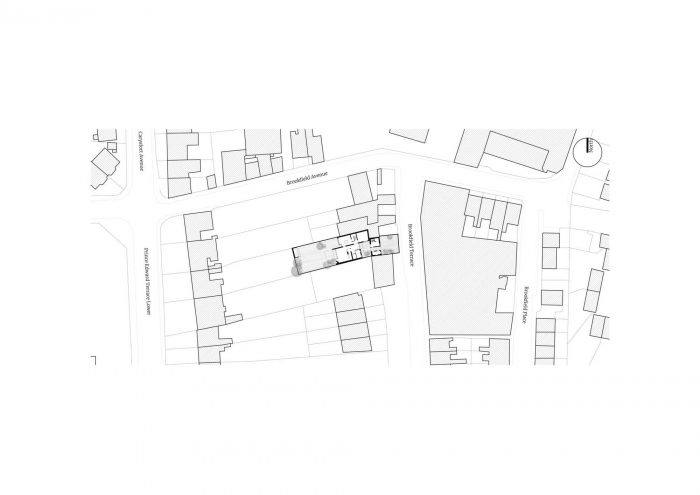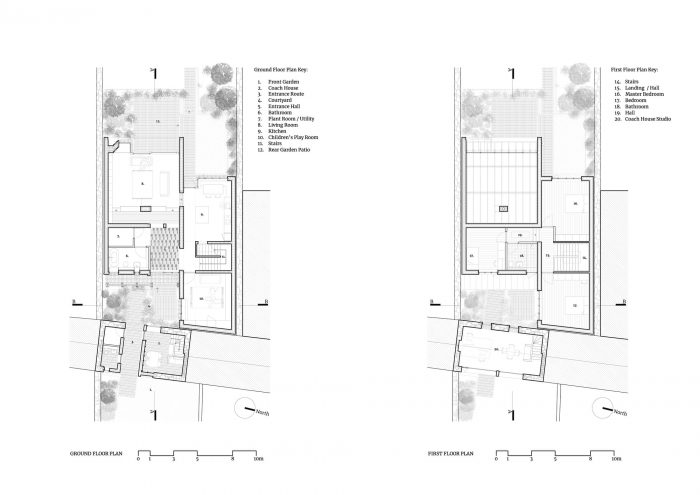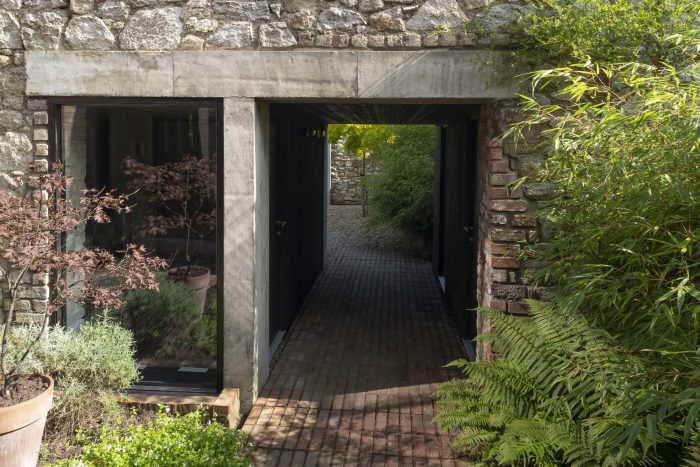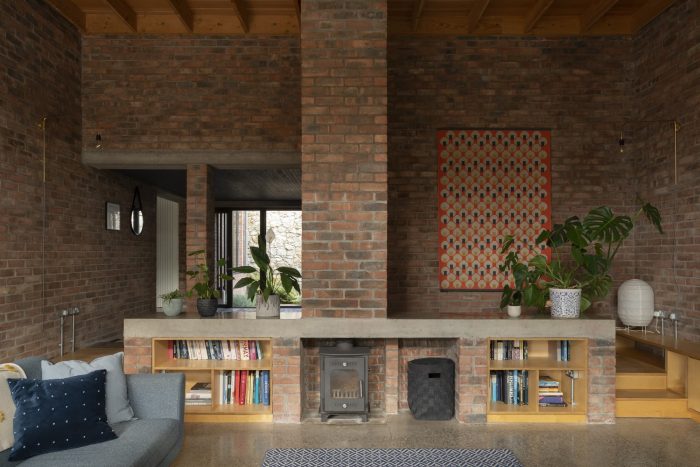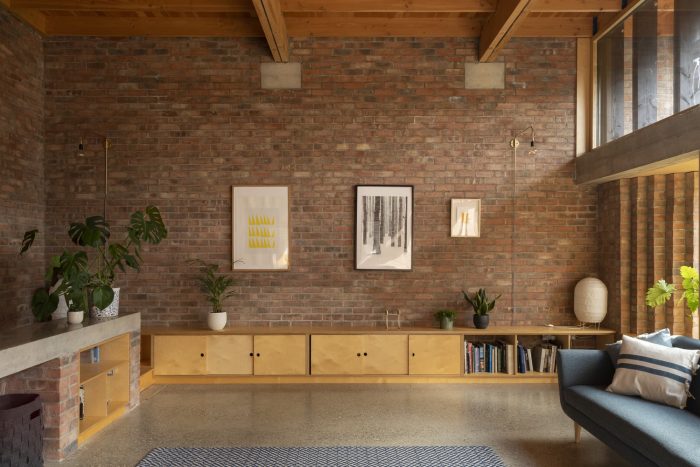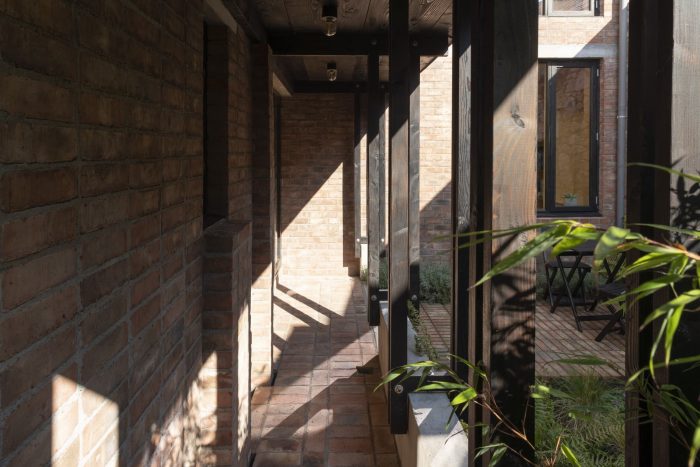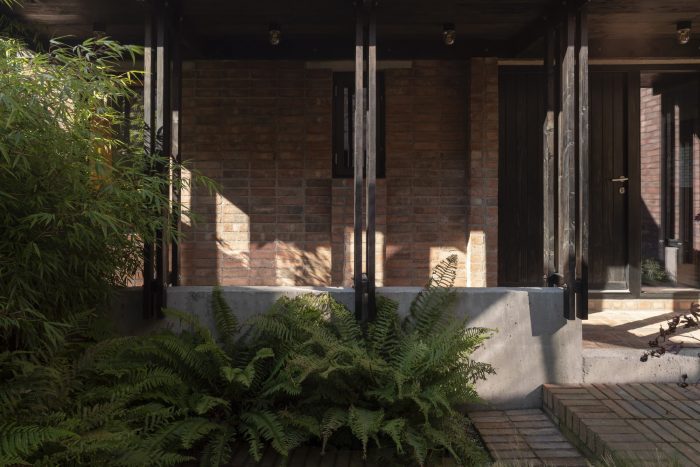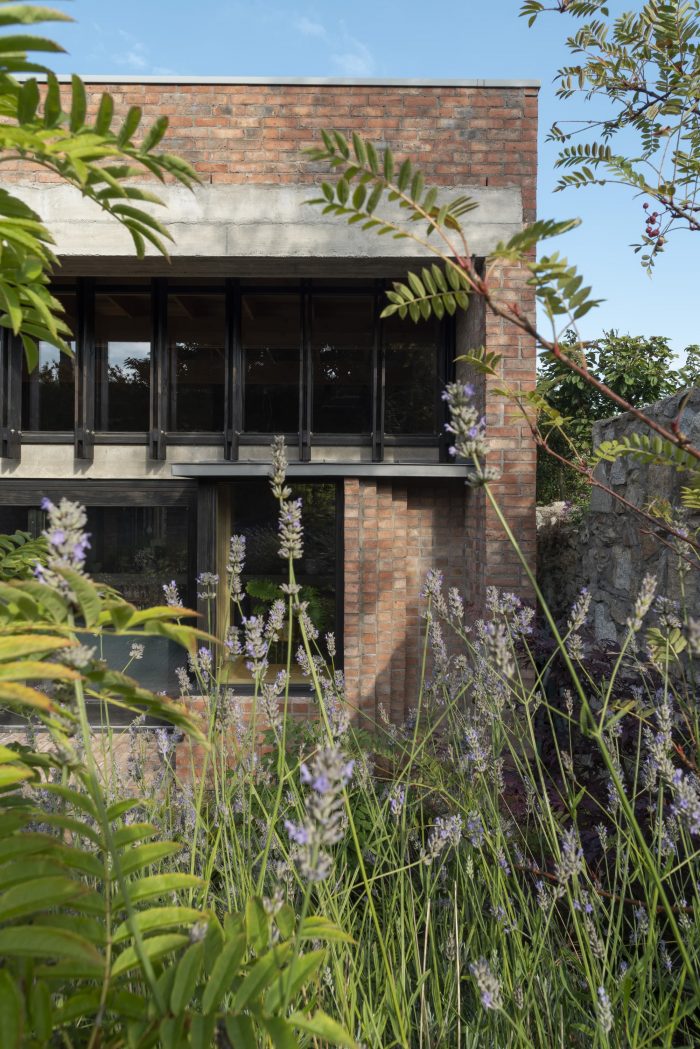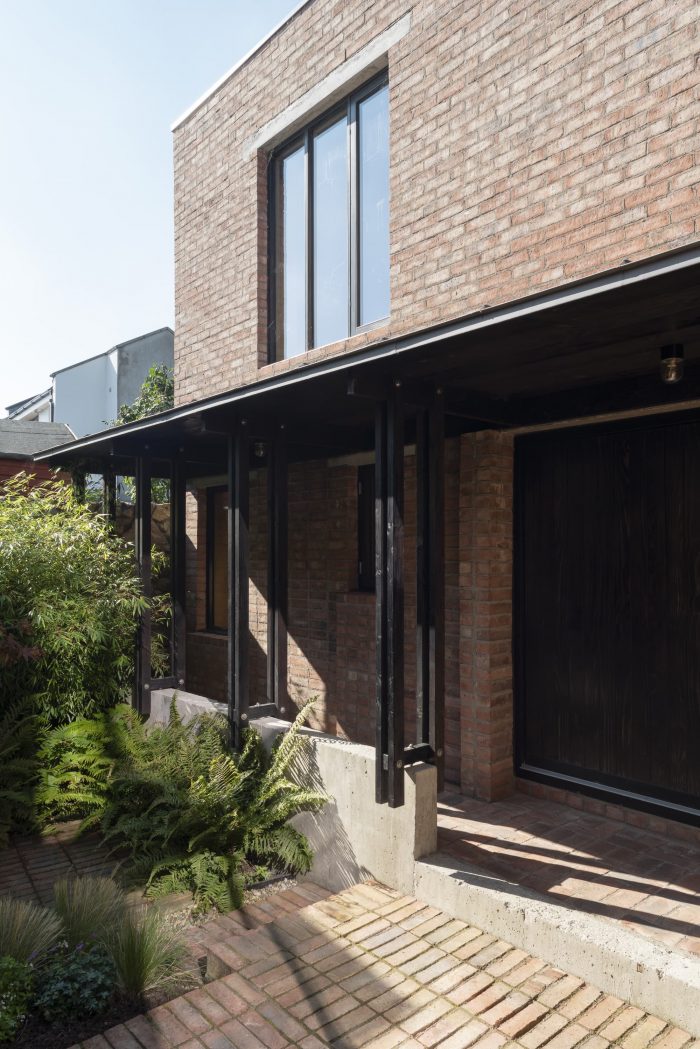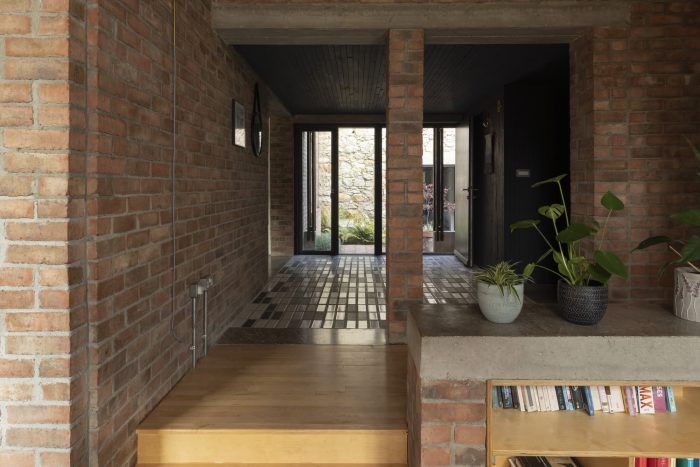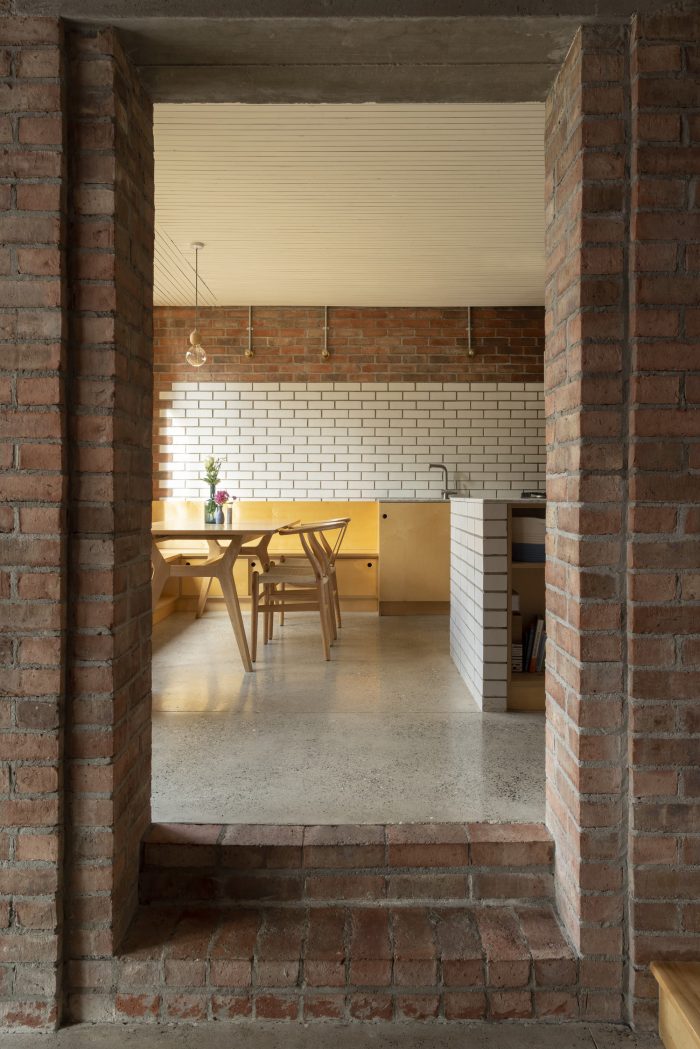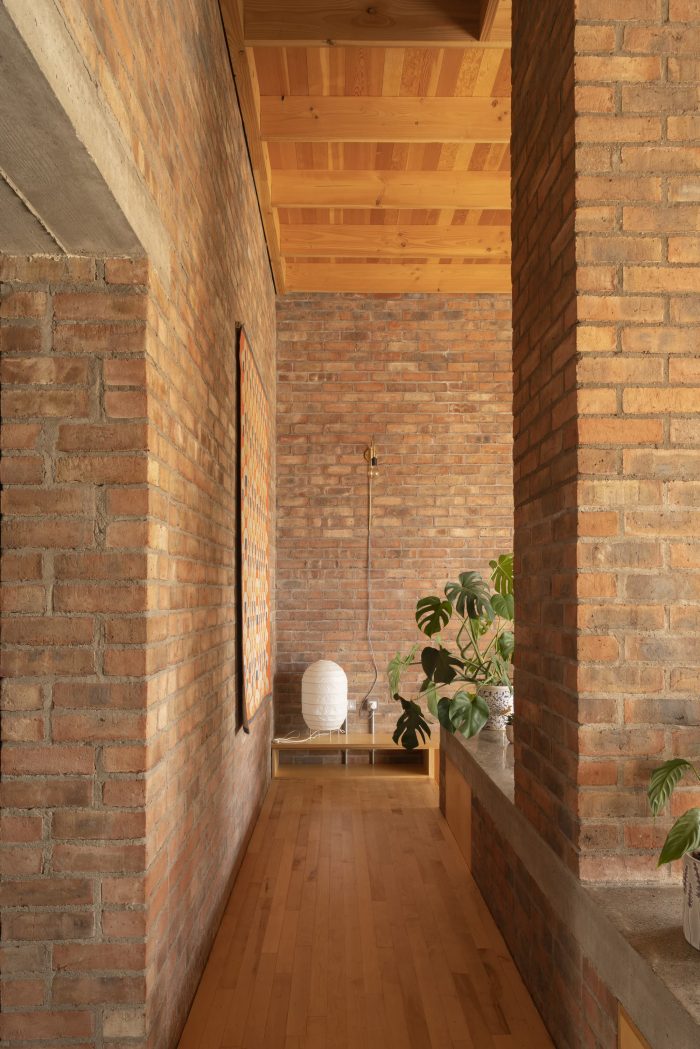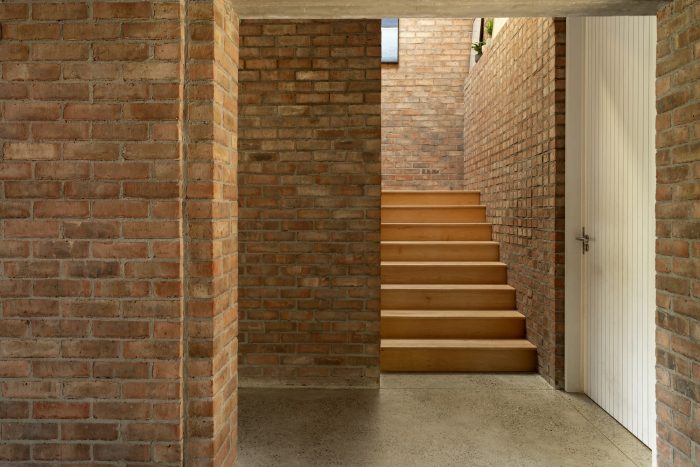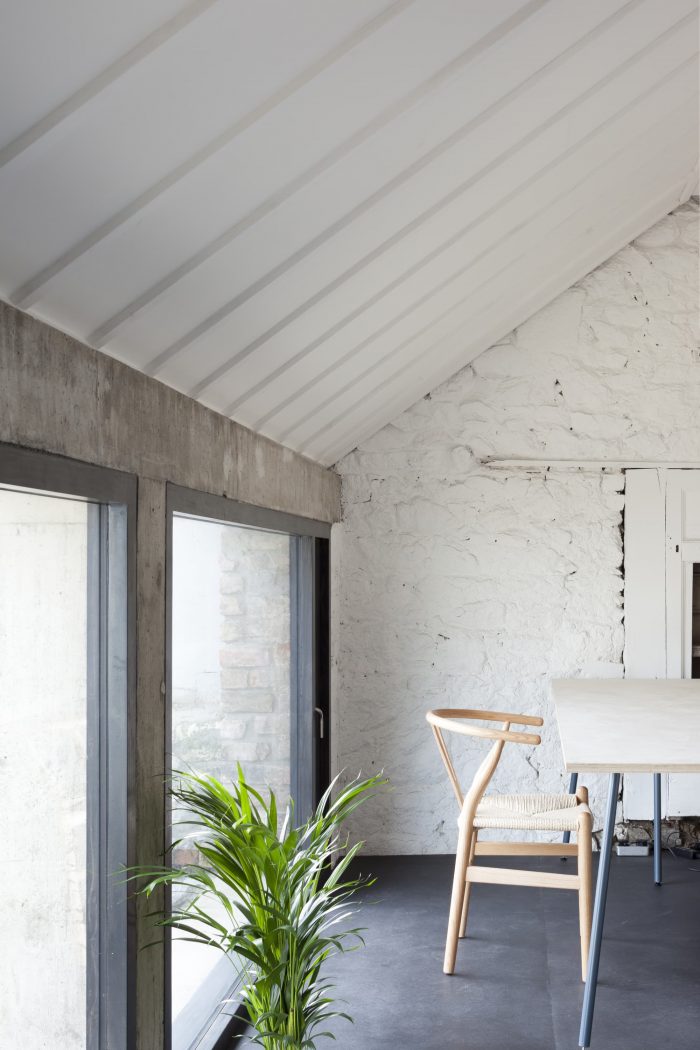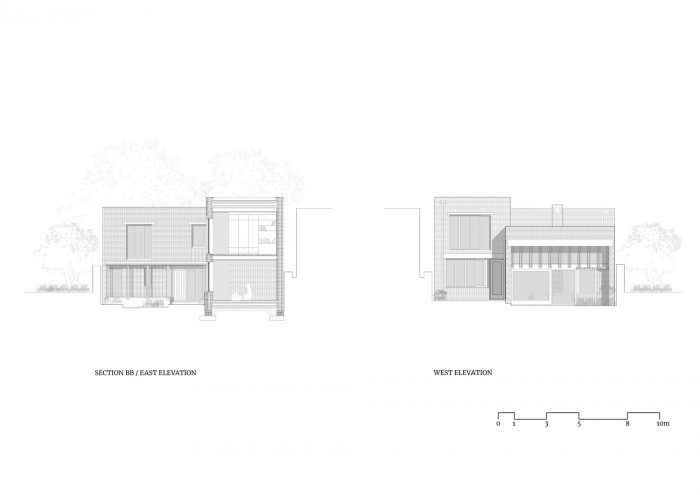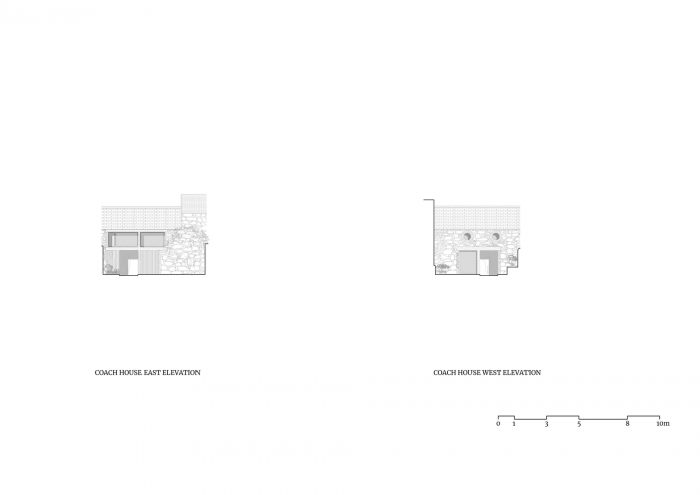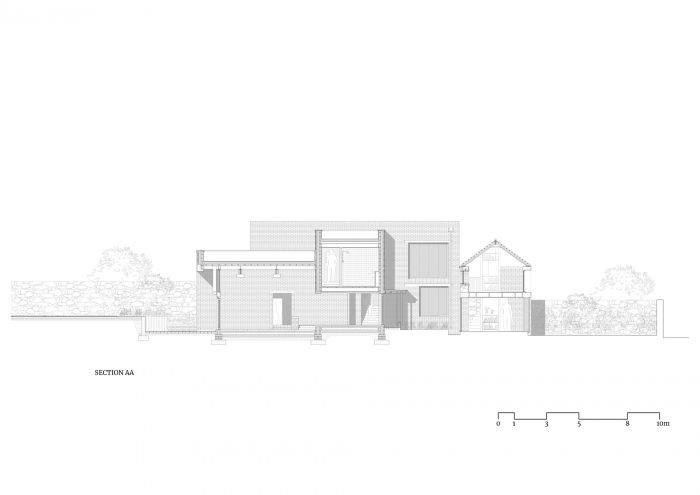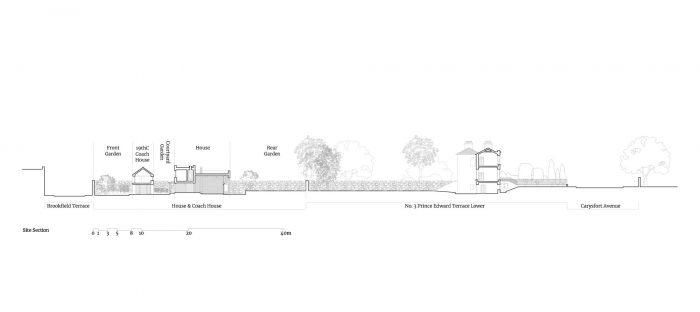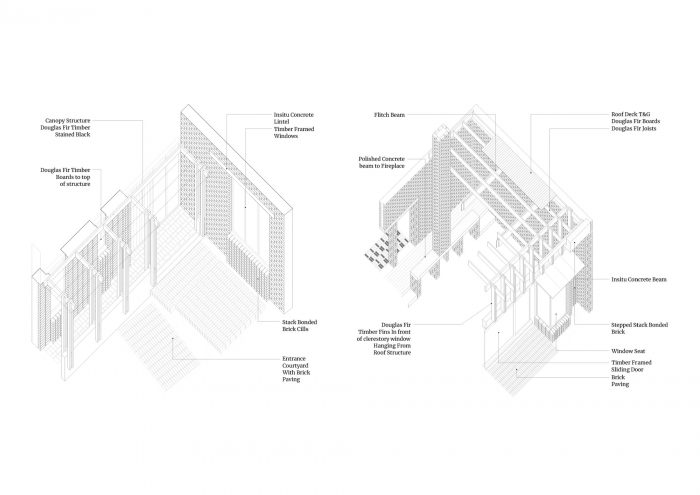一座新建的家庭住宅和一座现有的马车房位于爱尔兰都柏林郡布莱克罗克(Blackrock)的一座列名住宅的后方花园内。爱尔兰都柏林的布莱克(Blackrock)。新建的房子位于一个现有的19世纪的马车房建筑和一个被列为晚期乔治亚风格的房子后面的花园之间。建房前的场地被闲置了很多年。
A new build family house and an existing coach house are located within the garden, to the rear, of a listed house in Blackrock, Co. Dublin, Ireland. The new build house is located between an existing 19th-century coach house building and a garden to the rear of a listed late Georgian house. The site prior to the building of the house was left idle for many years.
建筑师对场地布局的想法是在前面、中间和后面创造一系列的花园空间。这些种植的室外花园和庭院的位置,创造了一个不同的空间组成,允许光线进入并从房子内的每个房间看到外面。房子采用了三个体量,每个体量都有不同的高度,在内部通过不同的天花板高度和内部体积来表达。一楼和二楼的楼层都有变化,在房子内部创造了空间的趣味。
The architect’s approach to the site’s layout is defined by the idea of creating a series of garden spaces to the front, middle, and rear. These planted outdoor gardens and courtyards are positioned in such a way that creates a composition of differing spaces, allowing light in and views out from each room within the house. The house adopts three volumes, each of differing heights, which are expressed internally within the section through varying ceiling heights and internal volumes. Both the ground and first floors have changes in their floor levels creating a spatial interest in the house internally.
现有的马车房是一个大约建于19世纪30年代的历史结构,作为一个单独的实体被保留下来,承认它作为一个独立的建筑存在。在现有的马车房和新房子之间创建了一个外部庭院,它利用了场地限制的不规则几何形状的优势。这个外部庭院既形成了一个入口空间,让光线进入两座建筑,又在人们到达主屋的前门之前形成了一个有趣的空间序列。
The existing coach house, a historic structure built circa the 1830s, was maintained as a separate entity acknowledging its existence as a standalone building. An external courtyard, which takes advantage of the irregular geometry of the site constraints, was created between the existing coach house and the new house. This exterior courtyard forms both an entrance space allowing light into both buildings and an interesting spatial sequence before one arrives at the front door to the main house.
这座房子充分利用了它的朝向,窗户和玻璃门的位置都经过精心设计,以确保室内空间反映出光线和季节的变化。特别是进入房子后部的客厅的光线,当它穿过沿天窗玻璃的有节奏的垂直黑色染色木片时,在内部砖墙上投下了戏剧性的阴影。这座房子的外部和内部都使用了克制的材料调色板和不同的纹理,以创造一个丰富的家庭环境。砖的选择是由场地和周围的现有环境驱动的。
The house makes the most of its orientation, windows and glazed doors are carefully positioned to ensure that the interior spaces reflect the changing light and seasons. Light entering the living room, to the rear of the house, in particular, casts dramatic shadows across the internal brick walls as it passes through the rhythmical vertical black stained timber fins along the clerestory glazing. The house, both externally and internally, uses a restrained material palette and different textures to create a rich environment within the home. The choice of brick was driven by the existing context of the site and its surroundings.
我们选择了水红色的砖,因为它与马车房中现有的砖相协调,并与四面围住场地的现有的乱石花岗岩墙相得益彰。房屋内主要起居室的天花板使用了暴露的花旗松结构木材。院子里的外部天棚和后方壁炉玻璃的翅片都是染色的黑色花旗松木料。
A buff red brick was chosen as it harmonized with the existing brick present in the coach house and complimented the existing coursed random rubble granite walls which enclose the site on all sides. Exposed Douglas fir structural timbers are used in the ceiling of the main living room within the house. The external canopy within the courtyard and the fins to the rear clerestory glazing are stained black Douglas fir timber.
承重混凝土门楣和横梁都是现浇的,与U型雨水斗一起浇筑,后者也是混凝土浇筑的元素。 该项目是对光线、材料和空间制造的探索。所选择的材料是坚固的,会随着时间的推移自然老化。外部和内部的空间都得到了同等的考虑。
Load-bearing concrete lintels and beams are all in-situ, poured in conjunction with the U-shaped rainwater hoppers which are also cast concrete elements. The project is an exploration of light, materials, and space-making. The chosen material palette is robust and will age naturally with time. Spaces both externally and internally are given equal consideration.
Architects: Culligan Architects
Area : 230 m²
Year : 2019
Photographs :Fionn McCann, Alice Clancy
Manufacturers : Fitzpatrick & Henry, Ibstock, Ketley Brick, Matthew O’Malley, Stone Seal, Søren Rose Studio
Lead Architects : Damien Culligan Barch ARB MRIAI, Lee Culligan Dip Arch Barch
Main Contractor : Ruby Building, Paddy Cuttle
Structural Engineer : Tom Culligan of Brunner Consulting Engineers, John Pigott of CORA Consulting Engineers
City : Dublin
Country : Ireland

